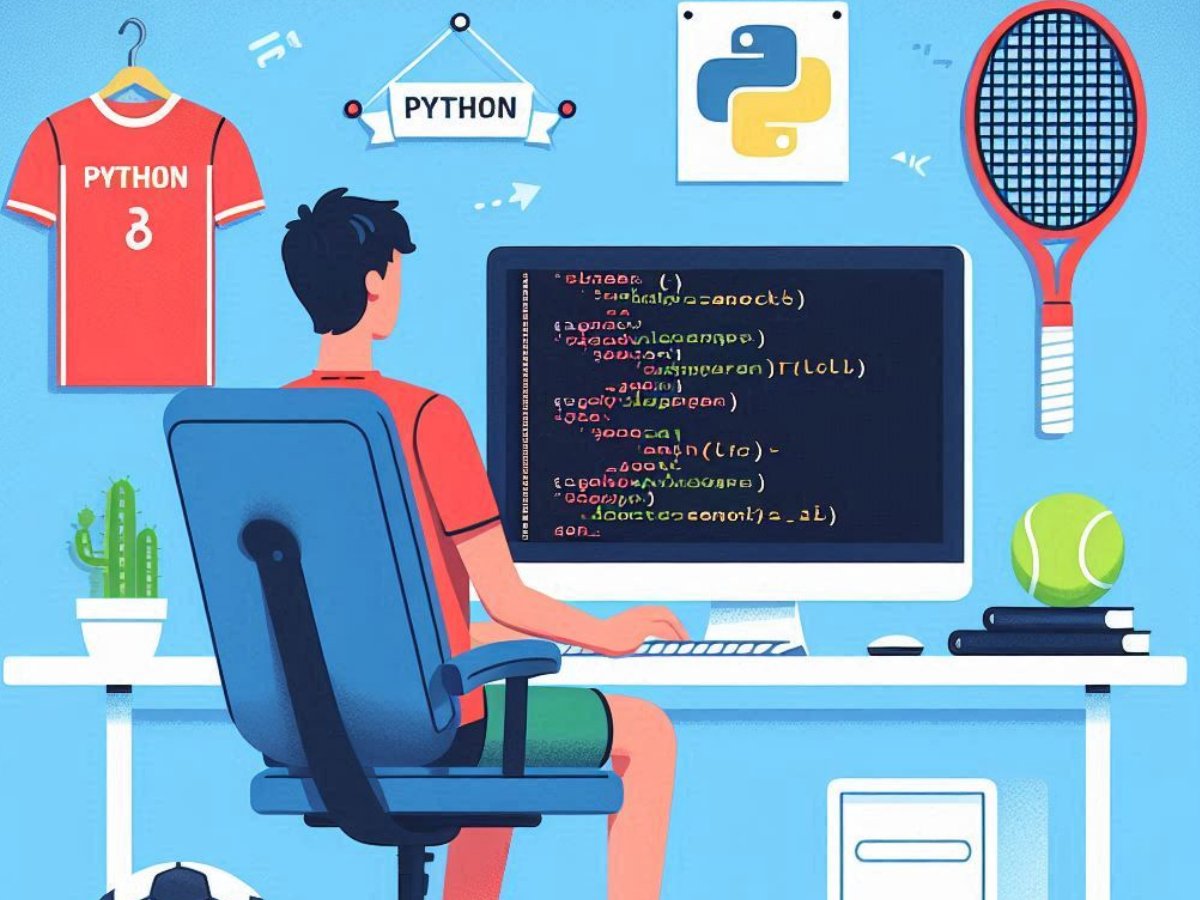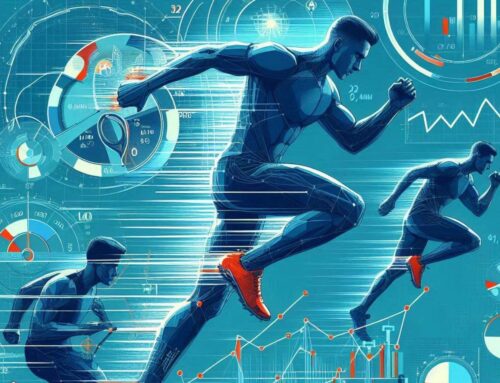AI models like ChatGPT and Gemini excel at processing language, making them valuable tools for generating code snippets and scripts based on natural language prompts. In sports analytics, this can be leveraged to analyze performance data and generate tailored training recommendations.
Step-by-Step Guide
-
Data Collection and Preparation
- Wearable Tech & Trackers: Utilize wearable devices (e.g., smartwatches, GPS trackers) to collect real-time data on athletes' performance metrics (heart rate, pace, distance, power output, etc.).
- Manual Logging: If wearable tech isn't available, have athletes manually log data like workout duration, exercises performed, and perceived exertion.
- Sports-Specific Data: Gather data relevant to the sport, such as game statistics, match results, video analysis (for movement patterns), etc.
- Data Formatting: Ensure all data is organized into a consistent format (e.g., CSV files) for easy analysis.
-
Defining Analysis Goals
- Key Performance Indicators (KPIs): Determine the specific metrics that are most important for the athlete's sport and position (e.g., VO2 max for endurance athletes, sprint speed for soccer players).
- Baseline and Target Values: Establish baseline performance data and set achievable targets for improvement.
- Areas for Improvement: Identify specific areas where the athlete may be underperforming or has room for growth.
-
Prompting the AI
- Detailed Instructions: Provide the AI with clear and comprehensive instructions. Specify the data you have, the KPIs you want to analyze, and the desired output format.
- Example Prompts:
- "Analyze this CSV file of athlete data and generate a Python program to calculate their average heart rate during different types of training sessions."
- "Using this athlete's GPS data from their last 10 runs, create a Python script to identify patterns in their pacing strategy and suggest adjustments for improved endurance."
- "Analyze this video footage of a basketball player's jump shot and generate Python code to assess their shooting form and provide feedback for improvement."
-
Iterative Refinement
- Review and Feedback: Carefully examine the generated Python code. Does it accurately address your analysis goals? Does it utilize appropriate libraries (e.g., Pandas, NumPy, SciPy)?
- Ask for Modifications: If the code doesn't meet your expectations, provide feedback to the AI and request refinements.
- Test and Validate: Run the Python code on your data and validate the results. Make adjustments as needed.
-
Implementing Training Recommendations
- Interpreting Results: Analyze the outputs generated by the Python program. Look for trends, correlations, and areas for improvement.
- Generating Recommendations: Use the AI to generate specific training recommendations based on the analysis. For example, suggest increasing interval training intensity or focusing on specific muscle groups.
- Personalized Plans: Tailor the recommendations to the individual athlete's strengths, weaknesses, and goals.
Example Python Performance Analysis Program (Generated by AI)
import pandas as pd
# Load athlete data from CSV file
df = pd.read_csv('athlete_data.csv')
# Calculate average heart rate for each training type
average_hr = df.groupby('training_type')['heart_rate'].mean()
print(average_hr)
Important Considerations:
- Data Privacy: Handle athlete data with care and ensure compliance with relevant privacy regulations.
- AI Limitations: Remember that AI is a tool, not a replacement for human expertise. Consult with coaches, trainers, and sports scientists to interpret results and develop training plans.
- Ethical Considerations: Use AI responsibly and avoid over-reliance on automated recommendations.
Conclusion
By combining the power of AI with sports data, you can create personalized, data-driven training programs that unlock athletes' full potential. While this guide provides a starting point, the possibilities for utilizing AI in sports analytics are vast and constantly evolving. Stay curious, experiment, and keep exploring new ways to leverage AI to enhance athletic performance.
AI models like ChatGPT and Gemini excel at processing language, making them valuable tools for generating code snippets and scripts based on natural language prompts. In sports analytics, this can be leveraged to analyze performance data and generate tailored training recommendations.
Step-by-Step Guide
Data Collection and Preparation
- Wearable Tech & Trackers: Utilize wearable devices (e.g., smartwatches, GPS trackers) to collect real-time data on athletes’ performance metrics (heart rate, pace, distance, power output, etc.).
- Manual Logging: If wearable tech isn’t available, have athletes manually log data like workout duration, exercises performed, and perceived exertion.
- Sports-Specific Data: Gather data relevant to the sport, such as game statistics, match results, video analysis (for movement patterns), etc.
- Data Formatting: Ensure all data is organized into a consistent format (e.g., CSV files) for easy analysis.
Defining Analysis Goals
- Key Performance Indicators (KPIs): Determine the specific metrics that are most important for the athlete’s sport and position (e.g., VO2 max for endurance athletes, sprint speed for soccer players).
- Baseline and Target Values: Establish baseline performance data and set achievable targets for improvement.
- Areas for Improvement: Identify specific areas where the athlete may be underperforming or has room for growth.
Prompting the AI
- Detailed Instructions: Provide the AI with clear and comprehensive instructions. Specify the data you have, the KPIs you want to analyze, and the desired output format.
- Example Prompts:
- “Analyze this CSV file of athlete data and generate a Python program to calculate their average heart rate during different types of training sessions.”
- “Using this athlete’s GPS data from their last 10 runs, create a Python script to identify patterns in their pacing strategy and suggest adjustments for improved endurance.”
- “Analyze this video footage of a basketball player’s jump shot and generate Python code to assess their shooting form and provide feedback for improvement.”
Iterative Refinement
- Review and Feedback: Carefully examine the generated Python code. Does it accurately address your analysis goals? Does it utilize appropriate libraries (e.g., Pandas, NumPy, SciPy)?
- Ask for Modifications: If the code doesn’t meet your expectations, provide feedback to the AI and request refinements.
- Test and Validate: Run the Python code on your data and validate the results. Make adjustments as needed.
Implementing Training Recommendations
- Interpreting Results: Analyze the outputs generated by the Python program. Look for trends, correlations, and areas for improvement.
- Generating Recommendations: Use the AI to generate specific training recommendations based on the analysis. For example, suggest increasing interval training intensity or focusing on specific muscle groups.
- Personalized Plans: Tailor the recommendations to the individual athlete’s strengths, weaknesses, and goals.
Example Python Performance Analysis Program (Generated by AI)
import pandas as pd
# Load athlete data from CSV file
df = pd.read_csv('athlete_data.csv')
# Calculate average heart rate for each training type
average_hr = df.groupby('training_type')['heart_rate'].mean()
print(average_hr)
Important Considerations:
- Data Privacy: Handle athlete data with care and ensure compliance with relevant privacy regulations.
- AI Limitations: Remember that AI is a tool, not a replacement for human expertise. Consult with coaches, trainers, and sports scientists to interpret results and develop training plans.
- Ethical Considerations: Use AI responsibly and avoid over-reliance on automated recommendations.
Conclusion
By combining the power of AI with sports data, you can create personalized, data-driven training programs that unlock athletes’ full potential. While this guide provides a starting point, the possibilities for utilizing AI in sports analytics are vast and constantly evolving. Stay curious, experiment, and keep exploring new ways to leverage AI to enhance athletic performance.





